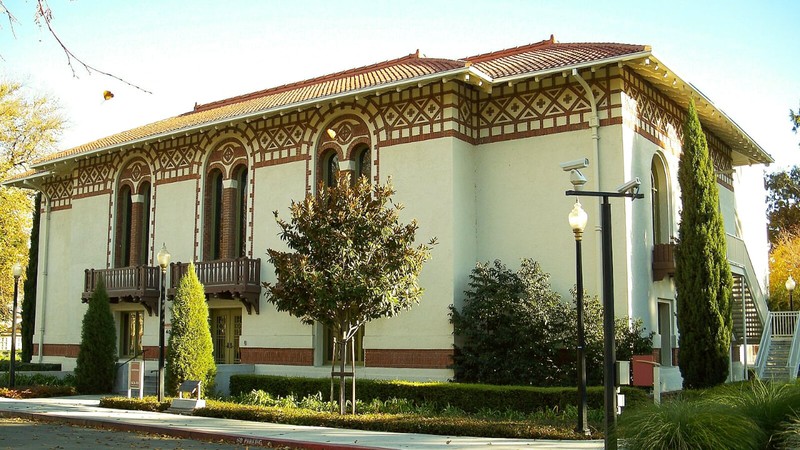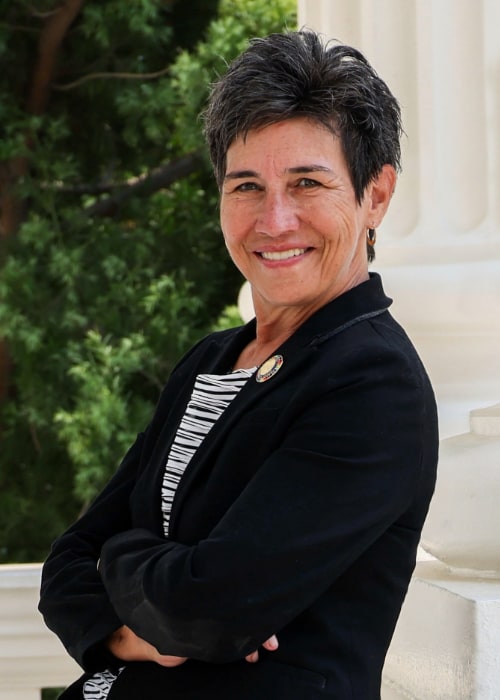Prop 1 was designed to help unhoused people get off the streets by forcing them into treatment. That’s one reason it took two weeks of vote-counting to pass.

An assembly hall at Agnews Developmental Center in Santa Clara. Agnews was one of five hospitals that served California residents with developmental disabilities and mental illness, all of which were emptied in the misguided move toward “community care." Photo by Eugene Zelenko GNU license
Note: This is an expanded and updated version of an earlier article titled ‘Prop 1: Compassionate Coercion or Return to the Cuckoo’s Nest?'
In the 1975 film ‘One Flew Over the Cuckoo’s Nest,’ the hero Randle Patrick McMurphy (Jack Nicholson) feigns insanity and is involuntarily committed to a state hospital ward dominated by a sadistic nurse. The film won all five major Academy Awards, and helped popularize the practice of “deinstitutionalizing” people suffering from mental illness.
That practice—moving patients out of mental hospitals and into community group homes— was born during the civil rights era, and was almost universally embraced. Daniel Yohanna, writing in the AMA Journal of Ethics, points out that the idea made all kinds of sense at the time. “Three forces drove the movement of people with severe mental illness from hospitals into the community,” he writes: “the belief that mental hospitals were cruel and inhumane; the hope that new antipsychotic medications offered a cure; and the desire to save money.”
Writing a decade ago, in 2014, Dr. Yohanna pointed out that the move toward so-called community care had already failed miserably, and had “made it impossible for people with severe mental illness to find appropriate care and shelter, resulting in homelessness or ‘housing’ in the criminal justice system’s jails and prisons.”
Agnews resembled a college campus, with lots of space and attractive two-story buildings designed to bring light and air to patients.
That argument was already being made in March of 1997, when the Agnews Developmental Center in Santa Clara was threatened with closure to make way for Sun Microsystems’ global world headquarters. In an investigative article and photo essay that ran in Metro Silicon Valley in March of that year, Christopher Gardner quoted a UC-Riverside study that found a 72 percent greater risk of premature death in the community care homes. (Full disclosure: I was news editor of Metro at the time and worked with Gardner on his piece.)
From the 1997 Metro article: “Last month, after years of dispute, the California Medical Association entered the fray, demanding a stop to care-home placements until a review can be completed … the 38,000-member AMA's call has given new hope to families of people who live in state-run developmental centers.”
Alas, following the report, a total of 327 Agnews residents “transitioned to living arrangements in the community.” This scenario played out statewide, and over the next decade, the number of people experiencing homelessness in California increased by 31%, while that number fell by 18% nationwide.
The Coercion Controversy
When Agnews State Hospital had been rebuilt in 1913 from the rubble of what had been the Agnews Insane Asylum, which was destroyed in the 1906 earthquake, it was California’s first modern mental hospital. Built during a progressive movement in medicine, it resembled a college campus, with lots of space and attractive two-story buildings designed to bring light and air to patients. When it was emptied of its patients, Agnews was one of five such institutions in the state.
As we now know, many of the people suffering from profound mental illness who once would have been sent to developmental centers throughout the state now end up on the street or in prison. And with the passage of Proposition 1, it may be that the era of deinstitutionalization has finally come to an end.
Proposition 1, which was too close to call ten days after voting ended on March 7 and therefore delayed the 2024 State of the State address, faced no funded opposition campaign. A December 2023 poll showed nearly 70 percent of voters in favor of the measure. What happened?
At the heart of the proposition is a $6.4 billion bond earmarked for facilities that would provide mental health care and drug or alcohol treatment, as well as housing for people with mental health, drug, or alcohol challenges. It also provides help for military veterans experiencing homelessness. Rachel Bluth of Politico points out that many opponents complain that it will ultimately force people into “coercive treatment.” For this reason, Prop 1 was opposed by the ACLU, Disability Rights California, and the League of Women Voters.
The ACLU argued that Prop 1 “would primarily fund forced treatment and institutionalization,” and the League of Women Voters argued against “amendments that opened the door to funding involuntary treatment in locked facilities.”
‘There is nothing compassionate about leaving suffering human beings on the street untreated, or waiting until they have committed a crime and treating them in prison.’
Sen. Susan Talamantes Eggman (D-Stockton)
In its election guide, the New York Times stated that Proposition 1 “could lead to an increase in involuntary treatment." That is a bit of an understatement. There is no doubt that Prop 1 will lead to such an increase—that is the whole point of the measure. It is in fact connected to two other pieces of legislation that laid the groundwork for getting people who are suffering from mental illness and addiction disorders off the streets and into treatment.
The Community Assistance Recovery and Empowerment, or CARE Act, mandated that counties create a new branch of their court systems, known as CARE Courts, specifically for mental health cases. Newsom signed the bill in September, 2022 and it took effect last October.
In previewing the CARE Courts, the Washington Post described it as “an experiment in what amounts to coercive compassion, an initiative that … will force people into treatment programs instead of jail.”

Also taking effect last October, Senate Bill 43, authored by Sen. Susan Talamantes Eggman (D-Stockton), updates the state law allowing for “the involuntary commitment and treatment of a person who is a danger to themselves or others or who is gravely disabled.” It does so by expanding the definition of “gravely disabled” to include individuals with “severe substance use disorder" or "chronic alcoholism.”
Sen. Eggman, who holds a PhD in social work and is a former professor at Cal State Sacramento, says her bill is indeed rooted in compassion for the individuals it would seek to place into forced rehabilitation.
“This bill is focused on helping the hardest to help,” she writes, “those with such serious mental illness that they frequently lack sufficient insight to even understand that they are severely ill. There is nothing compassionate about leaving suffering human beings on the street untreated or waiting until they have committed a crime and treating them in prison; rather than intervening to get them the help they desperately need.”
Today, these folks live in squalor on our streets, our parks and in camps under freeway overpasses and along riverbanks. Newsom has been working to change this situation, often controversially, since his first days as mayor of San Francisco. His primary constituents are families living in neighborhoods where camps have been established and business owners dealing with severely disturbed folks sleeping in their doorways. He has argued from the outset that encampments are also not good for the troubled folks living in them. Prop 1 is the first step in what could be a movement to fund a new generation of places like Agnews for unhoused Californians suffering from mental illness or addiction disorders.